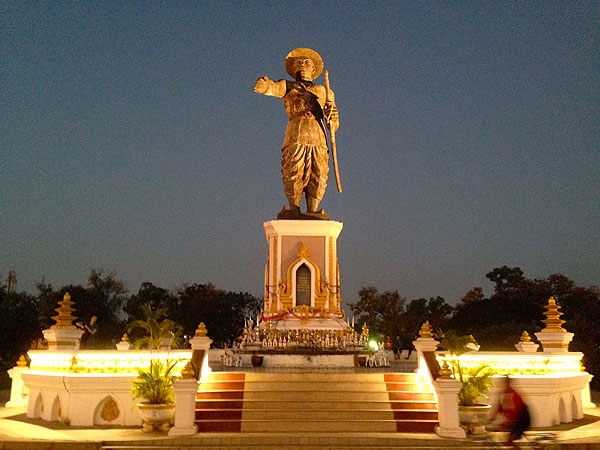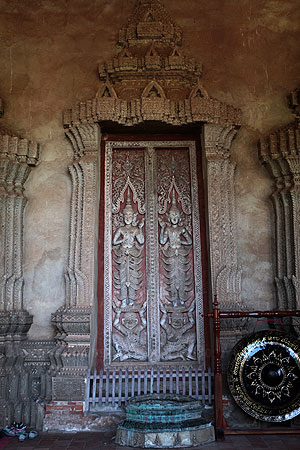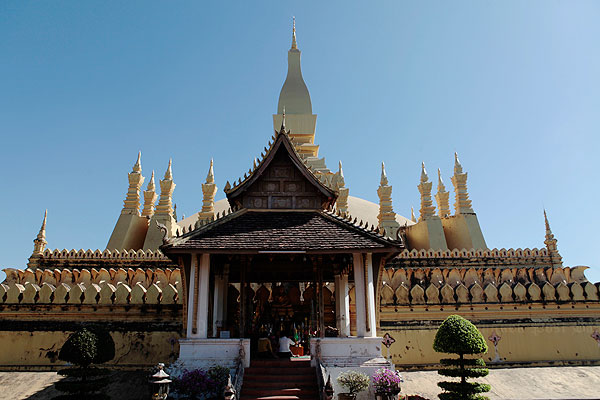
SW visits Vientiane
By Itsarin Tisantia
Photos by Arthur Jones Dionio
and courtesy of Bangkok Post
Vientiane, the capital of Laos, has a population of about 760,000 people. In addition to being the business centre of the country, Vientiane boasts many tourist attractions and historical sites.
This week’s Freeze Frame explores some of Vientiane’s famous sights.
 |
The statue of King Anuvong, the last monarch of Laos, is situated on Quai Fa Ngum Road. It is a popular place to watch the sunset over the Mekong River. A night market also opens in the area from 6 pm to 10 pm. |
 |
Patuxai, or the Victory Gate of Vientiane, is one of the capital’s famous landmarks. Built in 1962, Patuxai is located on Lang Xang Avenue. |
 |
The Haw Phra Kaew Muesum is one of Vientiane’s oldest temples. The temple once housed Phra Kaew, or the Emerald Buddha — which is currently housed at Wat Phra Kaew (the Temple of the Emerald Buddha) in Bangkok. |
Buddhist pilgrims are encouraged to pray for luck and prosperity at the City Pillar, which is located in Muang Si Temple on Setthathirat Road. |
 |
 |
Si Saket Temple was built in 1819 and is believed to be the oldest temple in the city. |
 |
The Pha That Luang stupa is the national symbol of Laos. The golden stupa is believed to have housed a holy relic of Lord Buddha that was brought from India in the 3rd century. |
 |
Visitors can enjoy scenic views while using boat services at Ban Diam Pier. |
Exercises
Read through Freeze Frame. Then, decide whether the following statements are true or false.
1. Si Saket Temple was built in 1891.
…………………..
2. The City Pillar is located on Setthathirat Road.
…………………..
3. Vientiane is the capital of Laos.
…………………..
4. The Pha That Luang stupa isn’t the national symbol of Laos.
…………………..
Vocabulary
- boast (v): to have something that is impressive and that you can be proud of
monarch (n): a person who rules a country, for example a king or a queen
pilgrim (n): a person who travels to a holy place for religious reasons
prosperity (n): the state of being successful, especially financially
relic (n): a part of the body or clothing of a holy person, or something that they owned, that is kept after their death and respected as a religious object


